Preparedness Challenge Week 9
This week the preparedness challenge is to add cooking oil to your food storage.
Why Is Oil Important in a Preparedness Pantry?
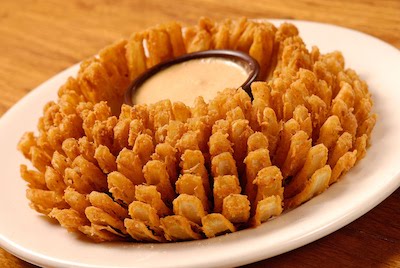
Even if you normally try to maintain a low-fat diet, oil is important in a survival diet. Fats and oils contain a high ratio of calories to weight and are especially important in a crisis because extra exertion and stress will increase the demand for calories.
Oil is also necessary ingredient in many baked goods, sauces, and dressings. It is important for sautéing and frying and most of all, it can make ordinary foods delicious—the deep-fried Bloomin’ Onion makes even the lowly onion into a favorite appetizer!
How Much Oil Should You Store?
Oil does not have a long shelf life, so you can’t buy a supply, put it on the back shelf of your storage room, and forget about it. You need to be careful about how much you store.
BEST PRACTICE
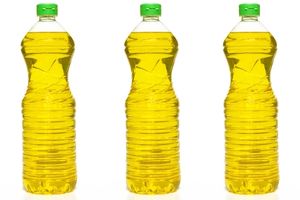
Determine how much oil you use in three to six months. To keep it simple, start by adding three containers of oil to your food storage—one to use now, one to use next, and one as your reserve. When you’ve used the first container, replenish it. That way you will always have between two and three containers on hand.
To keep it simple, add three containers of oil to your food supply.
You may want to increase the number of bottles you have in reserve. How many bottles will depend on how much oil you use, the size of the bottles, and what you anticipate you might need in the future.
To be more precise about of how much oil you use, write the date on the bottle of oil when you open it. When it is empty, note how long it took to use it. This will give you a starting point for determining how much oil you use and how much you should have in reserve.
What Size of Container Should I Store?
Depending on how much oil you typically use, good choices for storage are 48-ounce bottles, two-liter bottles, or even gallon-containers. I prefer to keep one 48-ounce bottle of oil in my kitchen pantry because I can use it before the oil becomes rancid. Plus, smaller sizes are easier to handle.
I keep my back-up containers in a cool basement storage room. I also keep a two-liter container of olive oil in my pantry that I use to fill the cruet that sits next to my stove. I keep at least one more in reserve.
Large containers are usually less expensive per ounce. Vegetable oil should be about ten cents an ounce. Olive oil is more expensive, about thirty cents an ounce. Check the price per ounce to be sure you are paying a fair price.
Tips for Storing Oil
Oil is expensive when compared to other basic storage foods, so it’s important to learn the best practices for buying and storing it.
- Vegetable oils have a short shelf life and need to be rotated.
- It is best to store only those oils that you use regularly.
- Dark colored oils are more flavorful but have a shorter shelf life than light colored oils.
- To minimize oxidation, store oils in a cool, dark place.
- Opaque containers help protect oil from light.
- Plastic bottles are somewhat permeable, so you may want to transfer oil to jars for a longer shelf life.
- Oil stored in unopened, opaque, plastic containers will keep about two years at 70 degrees or lower.
- You may be able to extend the storage life if you can maintain a lower temperature.
- Saturated fats like vegetable shortening and coconut oil have a longer shelf life than oils.
- If you have oils that are reaching the end of their shelf-life, consider donating them to a food bank.
What Kinds of Oil Should You Store?
VEGETABLE OIL
If a bottle of oil is labeled “vegetable oil” it is probably made from soybeans. Other vegetable oils are labeled with the specific name of the oil—canola oil, corn oil, safflower oil, sunflower oil, etc.
Although there are nuanced differences among the various vegetable oils, such as smoking point, they all have a similar storage life of about two years. However, if stored properly in a cool, dark place the storage life can be longer. Oils “go bad” when they become rancid. So, if the oil has no off-odor, tastes ok, and hasn’t changed color, it is safe to use.
OLIVE OIL
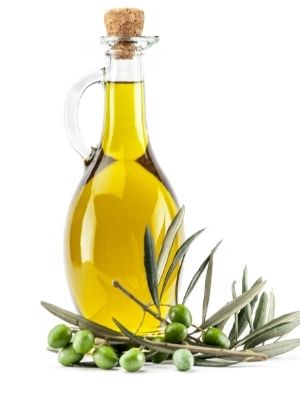
Olive oil has the longest shelf life of oils. Extra virgin olive oil is best for sautéing and drizzling. Pure olive oil is more refined and is better for frying.
This unique vegetable oil has a high monounsaturated fat content that gives it a longer shelf life than other vegetable oils. In ideal conditions, high-quality olive oil can have a shelf life of three to four years, though its antioxidant benefits diminish over time. If properly stored, pure olive oil has a shelf life of up to five years. If this is your oil of choice, like all oils, you’ll want to use and rotate it regularly.
VEGETABLE SHORTENING
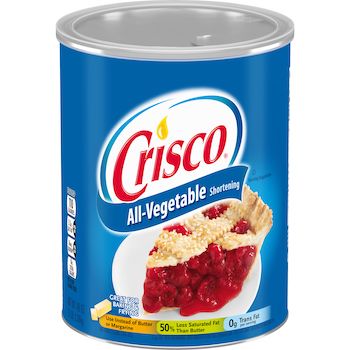
Vegetable shortening, such as Crisco, has a longer shelf life than oil. It comes in baking sticks as well as one-, three-, and six-pound cans. Its shelf life is at least five years if stored in a cool, dark place. You can use shortening after its “best-if-used-by date.” It should be bland tasting, with no off-putting odor or color. If it looks and smells fine, it is ok to use. Once opened and exposed to air, shortening has a about a one-year shelf life.
COCONUT OIL
Coconut oil has earned a reputation as a healthier alternative to regular vegetable oil. Because it is a saturated oil, it is solid below 74 degrees and can be used as a replacement for butter in baked goods. If properly stored, it will have a shelf life of two or more years. It can be frozen for longer storage.
BUTTER

Butter normally makes up 25 percent of added dietary fat. Regular butter needs to be refrigerated or frozen for optimal storage. Perhaps the best way to store butter is in the freezer. It does not take up much room, lasts at least a year, and is available whenever you need it.
We purchase butter when it is on sale, often before holidays, and usually store ten or more packages in our freezer.
LARD
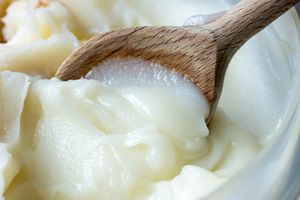
Made from the rendered fat of hogs, lard was a staple in past generations and is still commonly used in many countries of the world. It’s regaining favor as people transition back to basics and because making your own is a simple process. It can be used for frying and in baked goods and is especially prized in biscuits and pie crusts. It stores well in the refrigerator, although traditionally it was kept cool and replenished each year when the hogs were slaughtered. Like butter, it can be kept frozen in the freezer.

Find out more about storing foods and how to preserve food for storage in Crisis Preparedness Handbook, Third Edition (2020). If you don’t already have a copy, you can find it here on my website CrisisPreparedness.com. Or, read it on Amazon in the Kindle version or hard copy version.
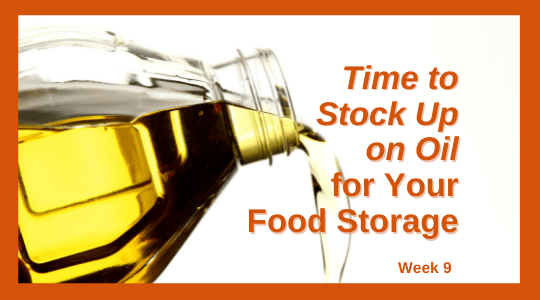


3 thoughts on “Tips for Adding Oil to Your Food Storage”
We appreciate these easy weekly challenges. We’re older on limited income & we include your challenges in our monthly budget. At least we’re doing something towards preparing…Thank you.
I am glad it is working for you and that it is manageable for your budget! Thanks for the comment
I like the comprehensive information you provide in your blog. The topic is kinda complex but I’d have to say you nailed it! Look into my page ZH5 for content about Airport Transfer.